In their element: women of the periodic table Understand article
Find out how women scientists contributed to knowledge of the chemical elements – and what this tells us about the nature of scientific work, then and now.
In March 1869, the Russian chemist Dmitri Mendeleev presented his periodic system to the Russian Academy of Sciences (Gordin, 2004). Behind this system was Mendeleev’s idea of a periodic law: a law of nature demonstrating regularities among the elements. Mendeleev’s system has proved to be robust to new developments in science, from the discovery of noble gases and radioactive elements to the world of quantum physics, and it has now reached its 150th anniversary.
The story of the periodic table and its elements started long before 1869, however – as did the participation of women in this communal venture. The history of any scientific field is often told from the point of view of the main concepts and theories, ignoring the experimental work and unexpected observations that led to this theoretical understanding – and it is this relatively neglected aspect to which many women made major contributions. As a counterpoint to this tendency, in this International Year of the Periodic Tablew1 we look at the stories of several women scientists whose work significantly contributed to our knowledge of the elements of the periodic table.
18th century
Marie-Anne Lavoisier and the new notion of the chemical element
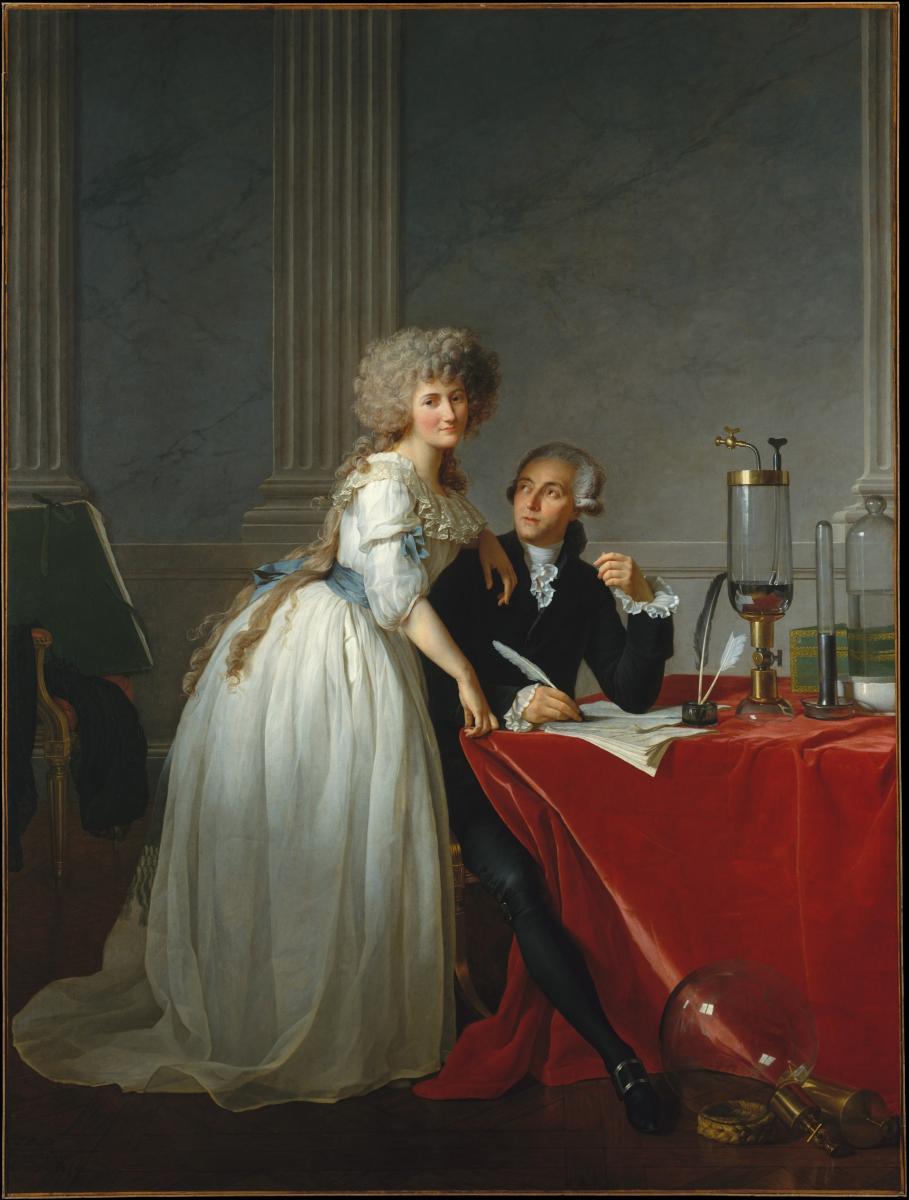
Antoine Lavoisier (1788)
(click to enlarge)
Jacques-Louis David, public
domain
The reformation of chemistry that took place in France in the 1780s is often celebrated as the beginning of modern chemistry. Central to this was the French aristocrat Antoine Lavoisier. In Méthode de nomenclature chimique (1787), Lavoisier and his collaborators gave new, systematic names to all known elements and created a set of rules for naming compounds, which are still valid today. Lavoisier also established the concept of a chemical element as a simple substance – one that could not be decomposed during chemical analysis – and presented a table of 33 elements. Although not all of these are considered elements today, the era of the four elements – earth, air, fire and water – was definitely over.
In a famous painting, Lavoisier is depicted with his wife, Marie-Anne: he’s at work, and she poses as his muse. There is much more to their story, though. Marie-Anne participated in Antoine’s scientific work by assisting him in the laboratory and in his correspondence, hosting learned gentlemen and ladies from abroad in her salon, and by translating scholarly work in other languages into French and illustrating scientific books. She also played a role in propagating the new chemistry – the element oxygen, in particular – through translating and critically annotating a noted contribution on the rival theory of ‘phlogiston’ by the Irish chemist Richard Kirwan.
19th century
Jane Marcet brings elements to the public
In 1806, a few decades after the chemical revolution, a London-based Swiss woman named Jane Marcet wrote a chemistry textbook that ran into 16 British and at least 23 American editions and was translated into French, German and Italian (Dreifuss & Sigrist, 2012).
Written in dialogue form and aimed at women, this very popular textbook’s success transformed chemistry into an elegant and noble topic of interest for the general public, including women and girls. Marcet’s material was quite up to date: she drew on Lavoisier’s table of elements, but also included the recently discovered alkali and alkaline earth metals (Na, K, Mg, Ca, Sr, Ba) isolated by Humphry Davy. She also mentioned the elements recently discovered or isolated by Jöns Jacob Berzelius and his pupils (Ce, Th, Se, Si, Zr, Li, La, Er, Tb, V) as well as those discovered by William Hyde Wollaston (Rh, Pd), Smithson Tennant (Os, Ir) and Charles Hatchett (colombium, later to be recognised as Nb). As a London-based science socialite, she was able through her acquaintances to provide a considerably longer list of elements compared to Lavoisier’s. Even so, Marcet found it necessary to publish the first editions of her book anonymously.
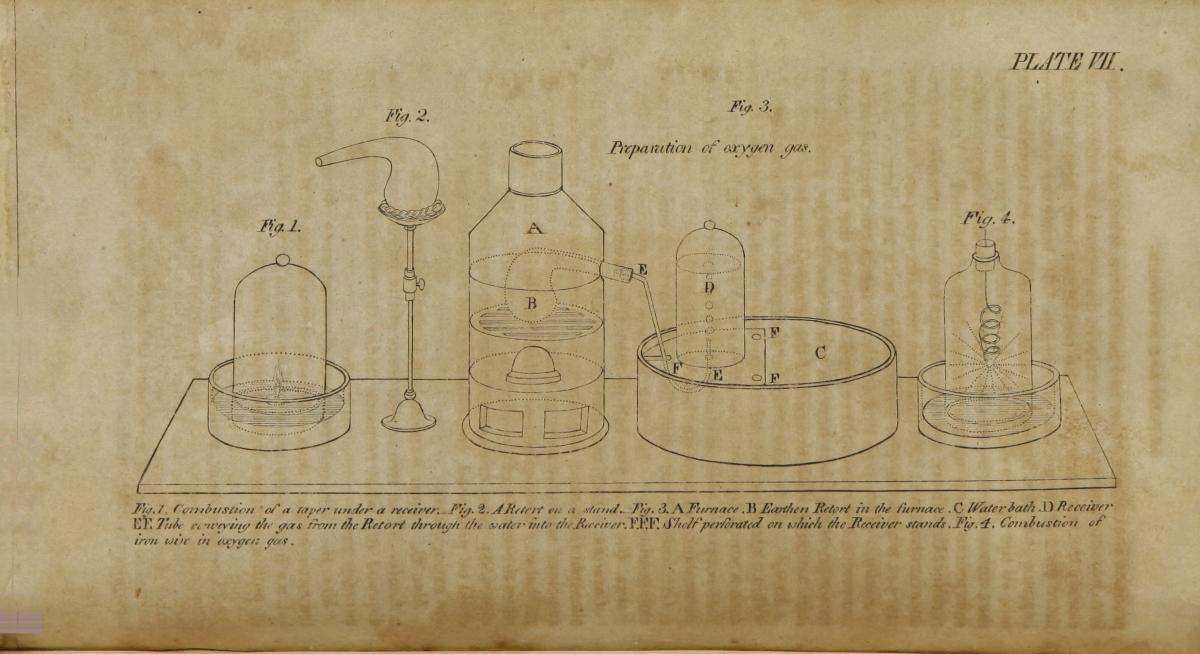
US National Library of Medicine/archive.org, public domain
Julia Lermontova and the platinum elements
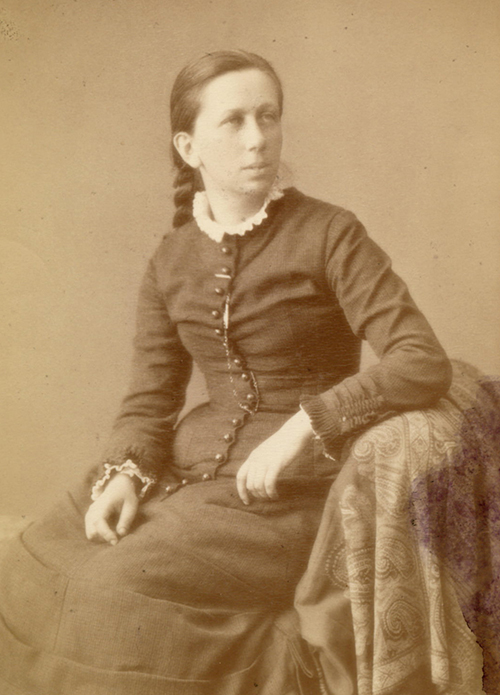
A Karvain/Institut Mittag-
Leffler
Quite different was the status of Julia Lermontova, the first woman in Germany (and one of the first worldwide) to be awarded a doctorate in chemistry, in 1874. A contemporary of Dmitri Mendeleev, she trained in Heidelberg under Robert Bunsen, worked with Wilhelm von Hoffman in Berlin, and received her doctoral degree in Göttingen. Lermontova took on the demanding experimental chemistry work to find the right place for the elements of the platinum group (Ru, Rh, Pd, Os, Ir, Pt) in the periodic system. These elements are very close to each other in properties and in atomic weights, but the need for a precise atomic weight required the substances to be prepared in their purest state. This task involved repeating precise analytical procedures, and such work was often left to ‘foot soldiers’ like Lermontova. The contributions of this shadow army of chemists – many of them women – who were required to provide pure elements or precise atomic weights are often forgotten, but they show the real challenges met by Mendeleev and his contemporaries to organise all known elements into a meaningful system. Lermontova’s unpublished work remained unknown to historians for a long time, but it was rediscovered in Mendeleev’s archives almost 100 years later.
20th century
Marie Curie and the radioactive elements

their workshop, c. 1900
Wellcome Collection, CC BY 4.0
Although the work of Marie Curie is well known, it is still astounding: ever since discovering polonium and radium with her husband, Pierre Curie, and their co-worker Gustave Bémont in 1898, Marie Curie and collaborators had to work their way, with meticulous chemical analyses, through tons of pitchblende mineral to obtain 0.1 g of radium chloride in 1902 (Quinn, 1995). Here, the woman of the team, Marie, was married to a scientist, Pierre, but they led independent research projects until Pierre realised the potential of Marie’s work on radioactivity and joined her in the laboratory. In this example, the forgotten figure is not a female assistant, but rather the male chemist Bémont.
Ida Noddack-Tacke and rhenium
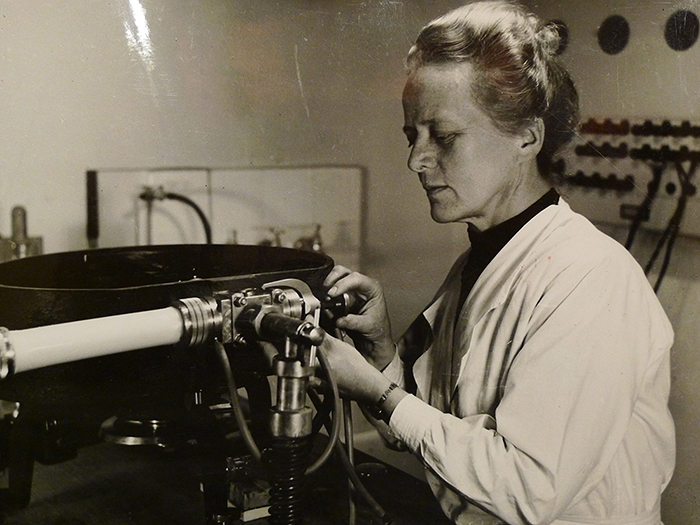
an X-ray spectrometer in the
laboratory, 1944
Universiteitsarchief Katholieke
Universiteit te Leuven
The German chemist Ida Noddack-Tacke faced the same exhaustion as Marie Curie when isolating one of the rarest metals on Earth, rhenium (Van Tiggelen, 2001). The announcement of rhenium’s discovery was made in 1925 by Ida Tacke and her husband-to-be, Walter Noddack (with the help of Otto Berg, another forgotten male figure), but it took three more years before the first 120 mg of pure rhenium was obtained, followed by the first measurement of its atomic weight in 1929. In the meantime, the couple had identified the locations that they thought would provide ores rich in rhenium, travelled to some of these places, and processed thousands of mineral samples to isolate the element. Pages and pages of laboratory notes are witness to the tedious and repetitive tasks that did not always provide the hoped-for results. Like the Curies, the Noddacks were a collaborative couple, even though Ida’s career remained financially and academically in the shadow of her husband’s.
Stefanie Horovitz and the proof of radioisotopes
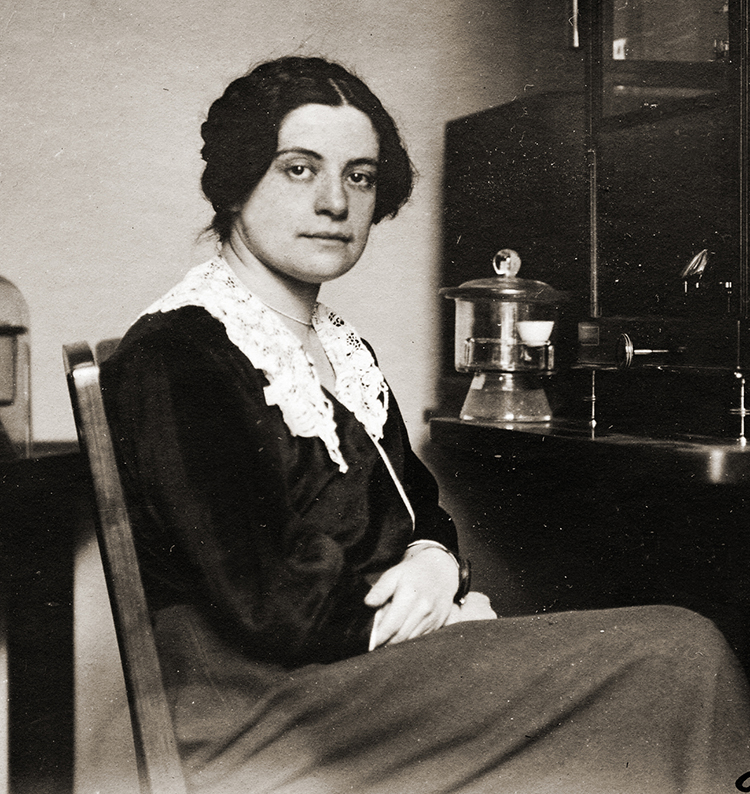
Radium Institute in Vienna,
1915
Austrian Central Library for
Physics, Vienna
The work of Polish-Jewish chemist Stefanie Horovitz provided the first authoritative evidence for the concept of isotopes. This idea – that the same element could have different atomic weights – was suggested by the British chemist Frederick Soddy in 1913 using a term coined by a British doctor, Margaret Todd. By that time, around 35 radioactive ‘elements’ had been discovered – many more than the empty spaces in the periodic system allowed for. The concept of isotopes would solve this growing problem, as many of the new radioactive elements later turned out to be isotopes of known elements. However, the concept itself was initially met with some scepticism.
To strengthen the case for isotopes, Soddy suggested a basis for experimental investigation: if lead could occur as different isotopes, then lead derived from uranium would be expected to have a different atomic weight to ordinary lead. In 1914, Horovitz was assigned to take up such investigations by her research supervisor, Otto Hönigschmid, at the Radium Institute in Vienna. She spent many a day separating out very pure samples of lead from radioactive uranium ores, followed by precise gravimetric measurements to determine their atomic weights. Her exacting work yielded differences in atomic weight beyond experimental error, thus confirming the existence of isotopes.
Working with Hönigschmid, Horovitz also helped to disprove the existence of one supposed new element, ionium, by showing that it had the same spectroscopic and chemical properties as thorium and differed from ordinary thorium only in its atomic weight. Ionium was thus identified as an isotope of thorium (Th-230).
Ellen Gleditsch and isotopes beyond the radioelements
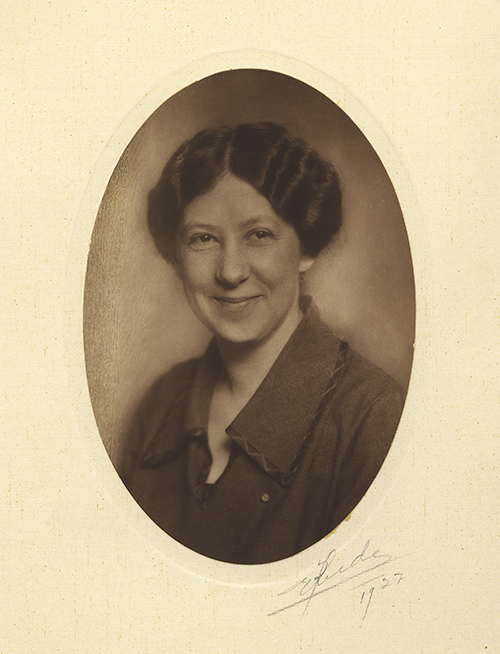
Chris Koch
Although born and educated in Norway, Ellen Gleditsch acquired expertise in radioactive measurement initially through training in Marie Curie’s laboratory in Paris (Lykknes, 2005). From there, she moved to Yale University, USA, where her work established a value for the half-life of ‘radium’ (later identified as the isotope radium-226). Published in 1915, this value provided an important scientific constant, as radium was regarded as the standard substance in this research field.
Later, at Harvard University, USA, Gleditsch (like Horovitz) became involved in investigations on isotopes. It was known that the atomic weight of radioactive elements (or those that resulted from radioactive decay) could vary depending on their geological source. For example, in ores rich with naturally occurring thorium, the abundance of lead-208 would raise the atomic weight of lead, while in uranium-rich ores (where lead-206 is produced), the atomic weight of lead would be lowered. This variability was thought to be true only for elements associated with radioactivity, not for the common lighter elements.
But in 1919, Francis Aston’s invention of the mass spectrograph, which allowed very accurate separation according to atomic weight and charge, challenged this assumption. When Aston announced that he had found two distinct atomic weights of chlorine (35 and 37) with an average atomic weight of 35.46, this was met with scepticism – as if here too the isotopic composition would vary with the source. The whole concept of constant atomic weights, on which the periodic system had been constructed, seemed to be at stake.
When Gleditsch and her collaborators investigated chlorine from different origins, they found that the isotopic composition of chlorine did not, in fact, vary from source to source. Irène Curie (daughter of Pierre and Marie) in Paris had reached a different result, but Gleditsch concluded that Curie’s samples must have been contaminated. Chlorine’s atomic weight was therefore constant after all, and the threat to the notion of stable atomic weights was overcome.
Complexity and collaboration
Throughout the history of the periodic system, women have contributed to its science: through the salons of the 18th century; as translators of scientific work; as textbook authors and disseminators; as collaborating wives, sisters and daughters; as research assistants, teachers and professors; and in laboratories, schools, homes and industry (Watts, 2007). Stories of individual women who contributed new knowledge about elements show that scientific work is complex and multifaceted, and that it relies on collaboration. Thus, such stories not only bring to light the less well-known contributions of women (and some men) to science: they also convey the true nature of science and scientific work.
Acknowledgements
The authors wish to acknowledge all the authors who have contributed stories about women and elements in the forthcoming volume Women in their Element: Selected Women’s Contributions to the Periodic System (published by World Scientific, August 2019). Special thanks go to the following authors: Patrice Bret and Keiko Kawashima, Gisela Boeck, Peter Childs, John Hudson, Marelene and Geoffrey Rayner-Canham, and Xavier Roqué.
References
- Dreifuss JJ, Sigrist NT (2012) The making of a bestseller: Alexander and Jane Marcet’s Conversations on Chemistry. In Lykknes A, Opitz DL, Van Tiggelen B (eds) For Better or For Worse? Collaborative Couples in the Sciences pp 19–32. Basel, Switzerland: Birkhäuser/Springer. ISBN: 3034802854
- Gordin MD (2004) A Well-Ordered Thing: Dmitrii Mendeleev and the Shadow of the Periodic Table. New York, USA: Basic Books. ISBN: 046502775X
- Lykknes A (2005) Ellen Gleditsch: Professor, Radiochemist, and Mentor. PhD thesis, Department of Chemistry, Norwegian University of Science and Technology, Trondheim, Norway.
- Quinn S (1995) Marie Curie: A Life. Cambridge, USA: Perseus Books. ISBN: 0201887940
- Van Tiggelen B (2001) The discovery of new elements and the boundary between physics and chemistry in the 1920s and 1930s. The case of elements 43 and 75. In Reinhardt C (ed) Chemical Sciences in the 20th Century: Bridging Boundaries pp 131–145. Weinheim, Germany: Wiley-VCH. ISBN: 3527302719
- Watts R (2007) Women in Science: A Social and Cultural History. London, UK: Routledge. ISBN: 0415253071
Web References
- w1 – The United Nations proclaimed 2019 the International Year of the Periodic Table of Chemical Elements. Read the announcement at the United Nations website.
Resources
- Find out more about the International Year of the Periodic Table from the IYPT2019 website.
- Read more about Jane Marcet and her textbook in this article in Chemistry World.
- Read profiles of Marie Curie, Antoine Lavoisier and Jane Marcet on the website of the Science History Institute.
- Explore the history of the periodic table by reading about some other proposed ways of arranging the elements.
- Lorch M (2019) Arranging the elements: the evolving design of the periodic table. Science in School 47: 26-29.
Review
If asked to identify women who contributed to the development of the periodic table, many people would struggle to name one. This article is a brief but fascinating glimpse into the development of this incredible resource, and it highlights many forgotten women (and men) who did much of the work but received little credit.
The article would make a useful discussion prompt or background reading for a number of topics in chemistry. Cross-curricular links can be made to other scientific areas in which the roles of women have been overlooked, such as IT, mathematics and space exploration. It would be ideal for a structured reading activity or as a comprehension exercise. Possible questions could include:
- Describe the role of Marie-Anne Lavoisier in establishing the current concept of a chemical element.
- Explain why Jane Marcet’s textbook was successful in bringing the chemical elements to the notice of the public.
- Why was determining the proper placement of some elements such a difficult task?
Caryn Howard, head of chemistry, St Mary’s School, Calne, UK





